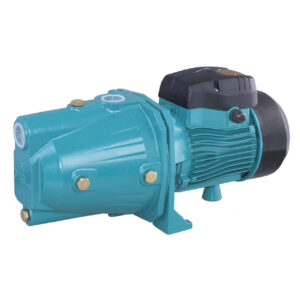As the world grapples with water scarcity, water plants have become pivotal in ensuring a sustainable and reliable water supply. Water plants, also known as water treatment facilities, work tirelessly to purify water and make it safe for consumption. These institutions are the unsung heroes in our battle against waterborne diseases.
Established during the 19th century, water treatment plants have evolved to incorporate advanced technologies like reverse osmosis and UV disinfection. Today, they serve billions of people worldwide, reflecting their indispensable role in public health. For instance, modern water plants can now remove 99.99% of pathogens, ensuring the highest level of water quality and safety.
Role of Water Plants in Ensuring Safe Water Supply
Water plants play a crucial role in delivering clean and safe water to our homes and communities. By treating raw water from natural sources, they remove harmful contaminants and pathogens. This ensures the water we consume is free from diseases. According to this post, water plants greatly contribute to reducing health risks associated with waterborne illnesses. Their comprehensive treatment processes safeguard public health and wellbeing.
The treatment process at water plants involves several stages. First, raw water undergoes coagulation and flocculation to remove larger particles and debris. Next, sedimentation allows these particles to settle, followed by filtration to remove finer impurities. Finally, disinfection with chemicals like chlorine kills any remaining pathogens. These steps collectively ensure the highest quality of drinking water.
Technological advancements have enhanced water treatment efficiency and effectiveness. Modern water plants now use technologies like reverse osmosis and UV disinfection. For instance, reverse osmosis membranes can filter out even the smallest contaminants, providing highly purified water. Here is the article on reverse osmosis water filter technology that delves into its significance. These innovations continuously improve water safety standards.
Beyond just supplying clean water, water plants also focus on sustainability. They implement water recycling and conservation practices to reduce waste and resource consumption. Many plants are now adopting green technologies to minimize environmental impact. This commitment to sustainability ensures that water plants not only provide safe drinking water but also protect our planet’s future. With growing urban populations, their role in sustainable water management becomes even more vital.
The Process of Water Treatment
The process of water treatment starts with coagulation and flocculation. In this stage, chemicals are added to raw water to bind with particles, forming larger clumps called flocs. These flocs settle out of the water more easily. This initial step is vital for removing dirt, clay, and other impurities. It sets the stage for the subsequent filtration process.
Following coagulation, the water undergoes sedimentation. Here, gravity pulls the heavier flocs to the bottom of a sedimentation tank. This allows clear water to be separated from the larger particles. Sedimentation significantly reduces the amount of solid material in the water. It prepares the water for finer filtration.
Next, the water is subjected to filtration. It passes through various filters, often made of sand, gravel, and charcoal. These filters capture smaller particles that escaped the previous steps. Filtration ensures the removal of microscopic contaminants. This stage is crucial for achieving clean and safe drinking water.
The final step in water treatment is disinfection. Commonly, chlorine or other disinfectants are added to kill harmful bacteria and viruses. This step ensures that pathogens are eliminated before the water reaches consumers. Disinfection provides a final safety measure against waterborne illnesses. After this, the treated water is ready for use in homes and businesses.
Evolution of Water Plants and Technological Innovations
Water plants have come a long way since their inception in the 19th century. Initially, they relied on basic filtration and rudimentary disinfection methods. Over the years, advancements in science and technology have transformed these facilities. Today, water plants use sophisticated processes to ensure a cleaner and safer water supply. The journey of their evolution reflects our growing understanding of water purification.
In recent decades, technological innovations have significantly boosted the efficiency of water treatment. For instance, the introduction of membrane technology like reverse osmosis has revolutionized the filtration process. This method can remove even the smallest contaminants, such as dissolved salts and bacteria. It provides a higher purity level compared to traditional filtration methods. Technologies like these have set new standards in water treatment.
Many water plants now incorporate ultraviolet (UV) disinfection. UV light effectively destroys pathogens without the need for chemicals. This technique is beneficial for its eco-friendliness and ability to target a wide range of microorganisms. UV disinfection offers an additional layer of protection. It is particularly popular in regions with a high demand for clean water.
Another significant advancement is the use of automated monitoring systems. These systems continuously track water quality parameters. They alert operators to any deviations from safety standards, allowing for immediate corrective action. Automation ensures that water plants operate efficiently around the clock. With these innovations, the future of water treatment looks promising and secure.
Impact of Water Plants on Public Health
Water plants play a vital role in safeguarding public health by providing clean and safe drinking water. Without these facilities, communities would be vulnerable to waterborne diseases. Dysentery, cholera, and typhoid are just a few examples of illnesses prevented by efficient water treatment. By removing harmful pathogens, water plants help keep populations healthy. The importance of their function cannot be overstated.
Additionally, the presence of water plants reduces the burden on healthcare systems. Clean water reduces the incidence of illnesses, resulting in fewer hospital visits and medical treatments. This allows healthcare resources to be allocated to other pressing needs. The economic benefits are substantial as well. Healthy populations contribute more effectively to society and the economy.
Water plants also impact the environment positively. They treat and recycle wastewater, reducing pollution and preserving natural water sources. This practice helps in maintaining ecological balance. It also ensures that future generations have access to clean water. The environmental benefits of water plants extend far beyond public health.
Moreover, educational programs conducted by water plants raise awareness about water conservation. They educate communities on the importance of using water wisely and maintaining the cleanliness of natural water sources. Such initiatives foster a culture of responsibility and sustainability. Public education efforts amplify the positive health impacts of water plants.
The reliability of water plants is crucial during natural disasters and emergencies. They provide a stable supply of safe water, even during crises, minimizing health risks. Emergency preparedness plans often include robust water treatment protocols to handle disaster scenarios. This ensures that public health is not compromised during challenging times.
Challenges and Future Prospect of Water Plants
Water plants face numerous challenges, including aging infrastructure. Many plants operate with outdated equipment, which can be less efficient and more costly to maintain. Upgrading these facilities requires substantial investment. This financial hurdle is particularly significant for developing regions. Addressing these issues is crucial for maintaining water treatment efficiency.
Another challenge is the increasing contamination of water sources. Industrial pollution, agricultural runoff, and climate change contribute to water impurities. These contaminants make water treatment more complex and expensive. Advanced technologies are needed to tackle these issues. However, implementing such solutions can be challenging.
Funding and resource allocation also pose difficulties. Governments and private sectors must prioritize investments in water infrastructure. Competing demands for resources can delay necessary upgrades and expansions. Ensuring consistent funding is essential for the continuous improvement of water plants. Strategic planning and policy support play key roles.
The future prospects for water plants are promising with the advent of new technologies. Innovations like smart sensors and artificial intelligence can optimize water treatment processes. These technologies offer real-time monitoring and predictive maintenance capabilities. They improve operational efficiency and reduce costs. The future holds great potential for water treatment advancements.
Sustainability remains a significant focus for the future of water plants. Incorporating renewable energy sources, like solar and wind power, can reduce their carbon footprint. Water conservation practices will also become more critical. Future facilities will likely integrate green technologies to enhance sustainability. This approach benefits both the environment and public health.
Community involvement will shape the future of water treatment as well. Public awareness and participation in water conservation efforts will be vital. Educational programs and partnerships with local organizations can drive positive change. The collective effort will ensure that water plants can continue to provide safe, clean water for generations to come. Engaging communities is essential for building a sustainable future.
Key Takeaways
- Water plants treat and purify water for safe consumption.
- They use processes like coagulation, sedimentation, and filtration.
- Modern plants employ advanced technologies like reverse osmosis and UV disinfection.
- These facilities are crucial for maintaining public health.
- Sustainability practices help protect the environment for future generations.
Frequently Asked Questions
Here are some common questions related to water treatment plants, their functions, and innovations. These answers provide insights into how these facilities operate and their importance.
1. How do water treatment plants ensure safe drinking water?
Water treatment plants use multiple processes to ensure water safety. These include coagulation, sedimentation, filtration, and disinfection. Coagulation helps remove large particles by clumping them together. Sedimentation allows these clumps to settle out of the water.
Filtration removes finer impurities by passing the water through several materials like sand and charcoal. Lastly, disinfection—typically using chlorine—kills harmful bacteria and viruses, ensuring the water is safe to drink before it reaches households.
2. What technologies are used in modern water treatment plants?
Modern water treatment plants utilize advanced technologies for more efficient purification. Reverse osmosis is one such technology that removes tiny contaminants by forcing water through a specialized membrane.
Additionally, ultraviolet (UV) light disinfection is increasingly popular due to its chemical-free approach to killing pathogens. Automation and smart sensors also play crucial roles in monitoring and optimizing plant operations.
3. Why is reverse osmosis important in water treatment?
Reverse osmosis is essential because it effectively removes dissolved salts and other tiny contaminants that traditional methods can’t filter out. This process enhances the purity of drinking water significantly.
The method involves forcing water through a semi-permeable membrane that traps impurities while allowing clean water to pass through. It’s particularly useful in areas with high levels of dissolved minerals or pollutants.
4. How do environmental factors impact the effectiveness of water treatment plants?
Environmental factors such as pollution and climate change can challenge the effectiveness of treatment plants. Pollution increases contaminants in raw water, requiring more complex treatments.
Climate change affects the availability and quality of natural resources, like rivers and lakes, from which raw water is sourced. This necessitates adaptive strategies for consistent clean-water delivery year-round.
5. What role do communities play in supporting sustainable practices at water treatment facilities?
Communities can support sustainability by participating in conservation programs initiated by local authorities or the facilities themselves. Educating people about proper waste disposal can reduce pollutants entering natural waterways.
Beyond this, community advocacy for investment in modern technologies can greatly enhance overall efficiency and environmental protection efforts at local plants.
.
Conclusion
Water treatment plants are indispensable in providing safe, clean water to communities. Their roles extend beyond simple filtration, encompassing advanced technologies and sustainability practices. As technology evolves, these facilities continue to improve, offering even higher standards of water quality.
Addressing challenges such as aging infrastructure and environmental impacts is vital for future progress. By embracing innovation and fostering community involvement, water plants can ensure a healthier and more sustainable future. The importance of their contribution to public health and ecological balance remains undeniable.




